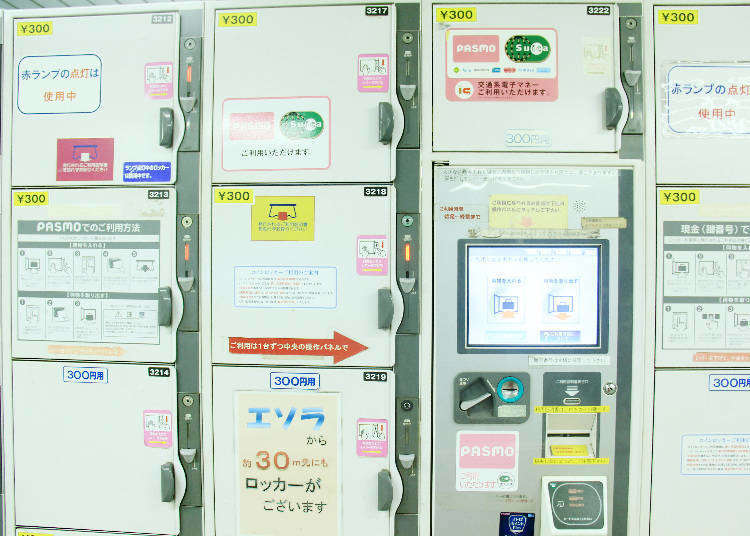
Coin lockers are an absolute necessity for everyone who wants to enjoy sightseeing in Tokyo but travels with a lot of luggage. Using them is easy, and so is finding vacant coin lockers – if you know where to look!
Which Places Have Lots of Coin Lockers?
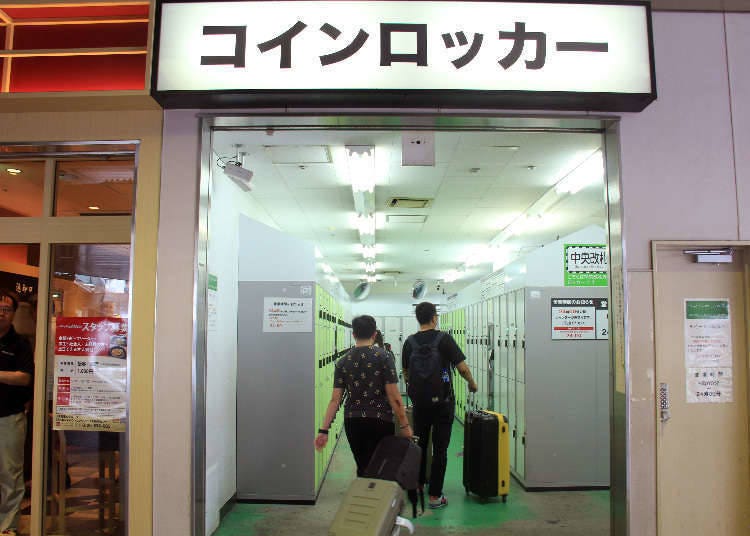
Generally, most coin lockers can be found in and around railway stations, such as JR and the subway, but also in underground passages or at bus terminals. In large stations such as Shinjuku, Ikebukuro, or Ueno, they are usually set up at each ticket gate and in connection passages, coming in up to four different sizes: small, medium, large, and extra large. Of course, as important connection hubs, both Tokyo and Shinagawa Station have numerous coin lockers to offer as well. Apart from coin lockers, station premises, sightseeing areas, and busy streets also tend to offer luggage keeping stations, so don’t worry about exploring Tokyo hands-free!
Big Enough for a Suitcase!
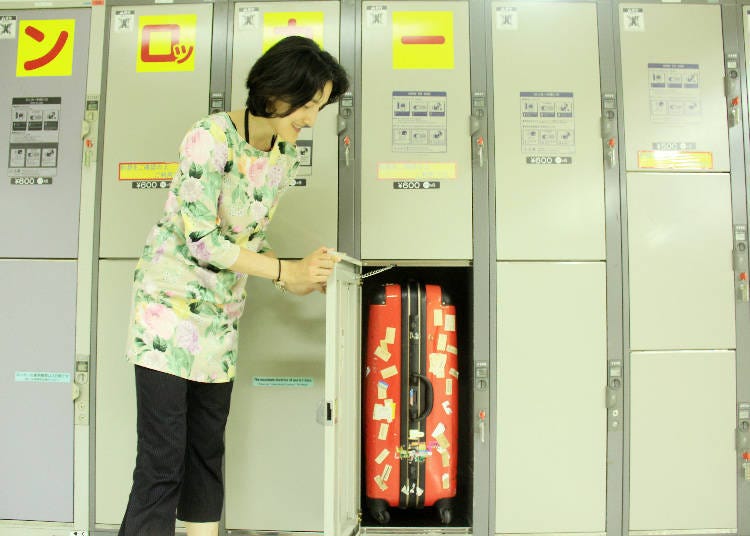
There are different sizes of coin lockers, small enough for a backpack or a handbag, and large enough to fit an entire suitcase. While the small lockers are the most common ones, medium- and large-sized coin lockers for travelers are a bit scarcer.
Of course, coin lockers at particularly busy places are often full, so checking in less crowded places is always worth it.
Coin Locker Types & How to Use Them
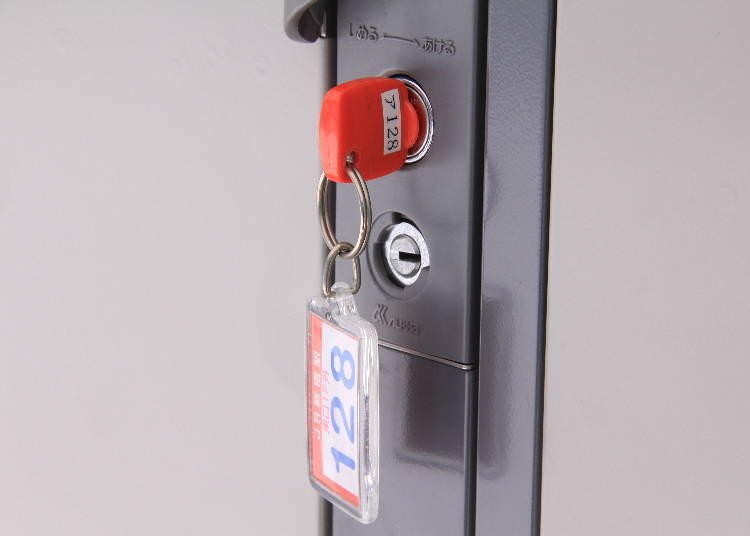
・ Key-type coin locker
This locker is particularly easy to use and thus perfect for every tourist! Simply pay for it with 100 yen coins, turn the key, and that’s it. Keep in mind, however, that this type of locker accepts nothing but 100 yen coins.
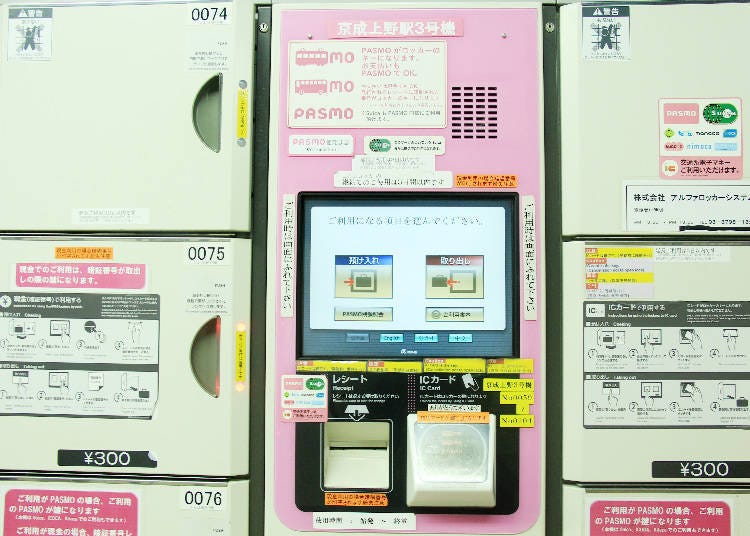
・ Touchscreen-type coin locker
The vacancy of these coin lockers can be checked via the internet and applications. They are locked and unlocked via a convenient touchscreen and can be paid cash or with an IC card, such as Suica and PASMO. If you choose cash, you’ll have to unlock it with a PIN code printed on the receipt, while the IC card payment allows you to unlock your locker via card reader.
Either kind of coin locker bills you for an entire day. Small lockers range between 100 and 300 yen, medium-sized lockers generally cost 300 to 500 yen, while large lockers cost 500 to 800 yen on average. If you plan on storing your luggage for longer than a day, you can do so for 3 to 4 days. The storage fee is billed with each passing day. If you exceed the maximum amount of storage time, your luggage will be picked up by the managing company and moved to their storage, where you can retrieve it within a month.
- Area
- Category
*Prices and options mentioned are subject to change.
*Unless stated otherwise, all prices include tax.
Popular Tours & Activitiess
Recommended places for you
-

Enjoy Japan's Gorgeous Winter Lights! Ride the Romancecar to Shonan no Hoseki Illumination
by: Guest Contributor
-

Get Ready to Catch 'Em All! First Ever Permanent Outdoor Pokémon Park Opening Near Tokyo!
-

See Asakusa and Tokyo Skytree® in a New Light at the "Také Akari" Festival (Winter 2025-2026)
by: Guest Contributor
-

A Travel Game Changer! Go Hands-Free Between Tokyo and Kyoto with LUGGAGE EXPRESS by JTB and JR Tokai
by: Guest Contributor
-

Shopping, Dining & All-Day Fun! Your Complete LaLaport Guide + Exclusive Tourist Coupon
-

2025 Japan Autumn Color Report: Northeastern Japan Nearing Peak
by: Timothy Sullivan
Inspiration for Accommodations
-

Enjoy Mt. Fuji from the Comfort of Your Room! Recommended Ryokan with Mt. Fuji View
-

Stay Near the Cherry Blossoms! Hotels for Cherry Blossom Viewing in Tokyo
-

Family-Friendly Hotels with Free Shuttle to Disneyland: Convenient Access for a Magical Stay
-

Top Ranked Hakone Hotels with Mt. Fuji View: Enjoy Stunning Scenery from Your Private Space
-

Convenient Tokyo Hotels with Airport Shuttle: Ideal for Families and Heavy Luggage
-

Stunning Tokyo Tower View Hotels: Enjoy Spectacular Scenery from Your Private Space
-

Convenient Asakusa Hotels with Kitchens: Ideal for Extended Family Visits
-

Experience Luxury: Hakone's 10 Best Five-Star Accommodations
-

Enjoy Mt. Fuji Autumn Leaves! Top Hotels Near the Popular Autumn Leaves Corridor
-

Experience Hakone Fall Foliage from Your Room with Stunning Views
-

What Is 'Hanachozu' - Japan's New Way To Heal At Temples And Shrines Amid The COVID-19 Pandemic?
by: Miyu Shimada
-

(Video) Walking Tour along Narita Omotesando - Quaint Historical Village near Narita Airport!
by: Victor Gonzalez
-

Secrets to Saving Money in 'Expensive' Japan: Tips From Real Travelers
by: Joe Turner
-

Secrets to Shopping in Japan: Guide to Annual Sales in Japan & Where to Shop
by: Miyu Shimada
-

Kichijoji – Explore Tokyo’s Top-Rated Stylish Suburb in Half a Day!
-

Best Views in Tokyo: Top 5 Spots for Seeing Tokyo's Iconic Skyline in 1 Day
- #best ramen tokyo
- #what to buy in ameyoko
- #what to bring to japan
- #new years in tokyo
- #best izakaya shinjuku
- #things to do tokyo
- #japanese nail trends
- #what to do in odaiba
- #onsen tattoo friendly tokyo
- #daiso
- #best sushi ginza
- #japanese convenience store snacks
- #best yakiniku shibuya
- #japanese fashion culture
- #best japanese soft drinks


















